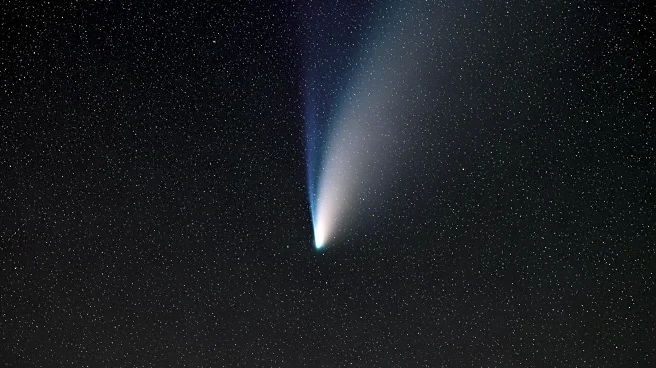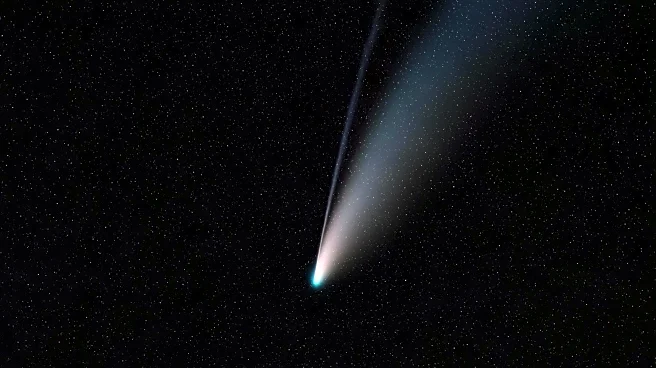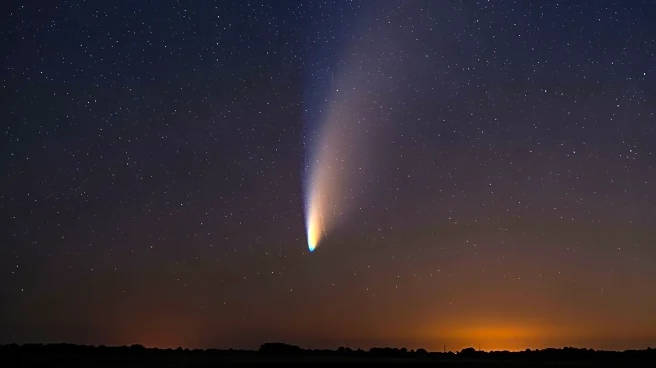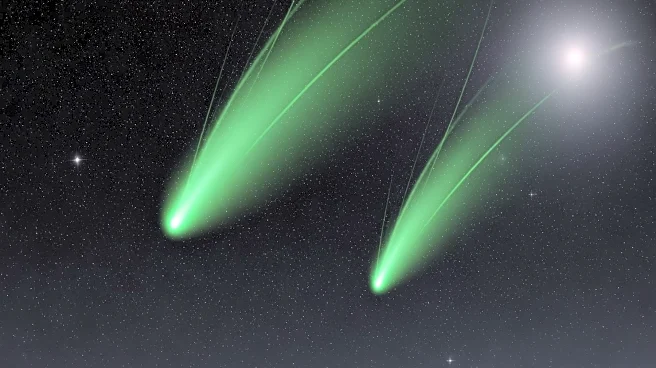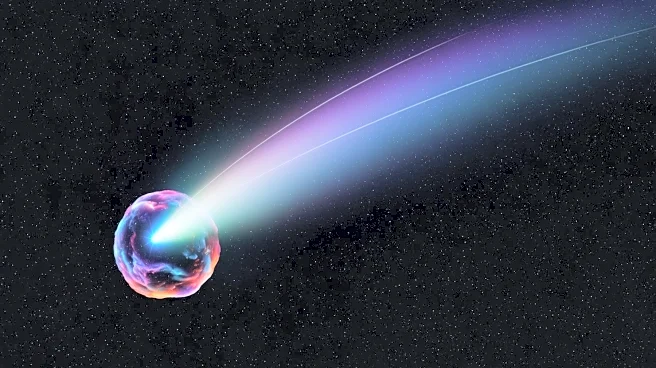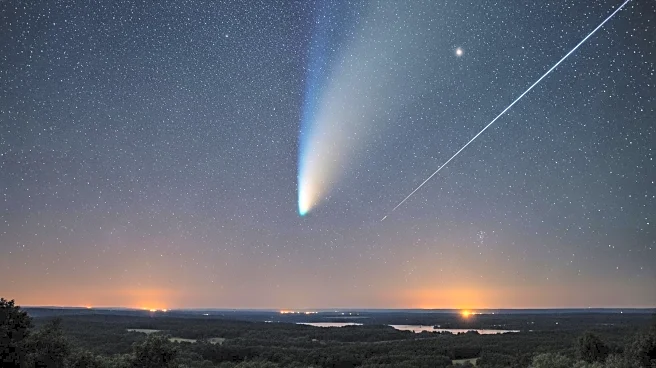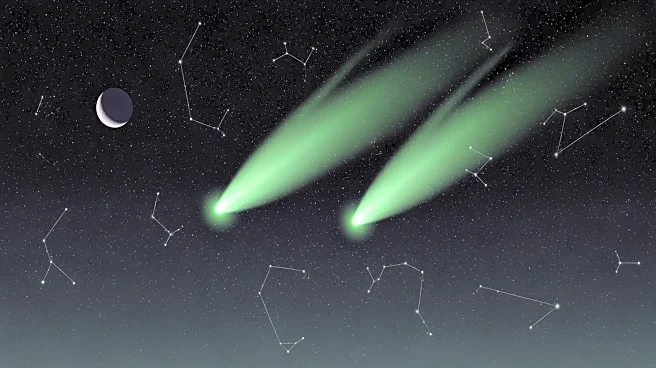What's Happening?
A newly discovered comet, C/2025 A6/Lemmon, is rapidly brightening and will soon be visible to the naked eye over New York State. Scientists report that the comet is on a 1,350-year journey and will reach
its closest point to the Sun on November 8. The comet's tail is being affected by solar wind, which is a stream of charged particles emanating from the Sun. The comet is expected to be the best viewing opportunity of 2025, with its closest approach to Earth occurring on October 21. It is anticipated to reach its brightest point around October 31 or November 1, making it a significant event for astronomy enthusiasts.
Why It's Important?
The visibility of Comet C/2025 A6/Lemmon presents a unique opportunity for both amateur and professional astronomers to observe a celestial event that occurs infrequently. This event could stimulate interest in astronomy and science education, particularly in New York State, where the comet will be visible. The comet's appearance may also contribute to increased public engagement with astronomical phenomena, potentially inspiring future scientific exploration and discovery. Additionally, such events can have cultural significance, as they often lead to gatherings and discussions among communities interested in space and science.
What's Next?
As the comet approaches its closest point to Earth, observatories and astronomy clubs in New York State may organize viewing events to facilitate public engagement. These events could include educational sessions about comets and their significance in the solar system. Furthermore, scientists will continue to monitor the comet's trajectory and brightness, providing updates and insights into its behavior as it interacts with solar wind. The comet's visibility may also lead to increased media coverage, highlighting the importance of space exploration and scientific research.
Beyond the Headlines
The appearance of Comet C/2025 A6/Lemmon could have broader implications for scientific research, particularly in understanding the composition and behavior of comets. Studying the effects of solar wind on the comet's tail can provide valuable data on the interaction between solar particles and celestial bodies. This information could contribute to the development of new theories about the solar system and the forces that govern it. Additionally, the event may inspire future generations to pursue careers in astronomy and space science, fostering innovation and discovery.


